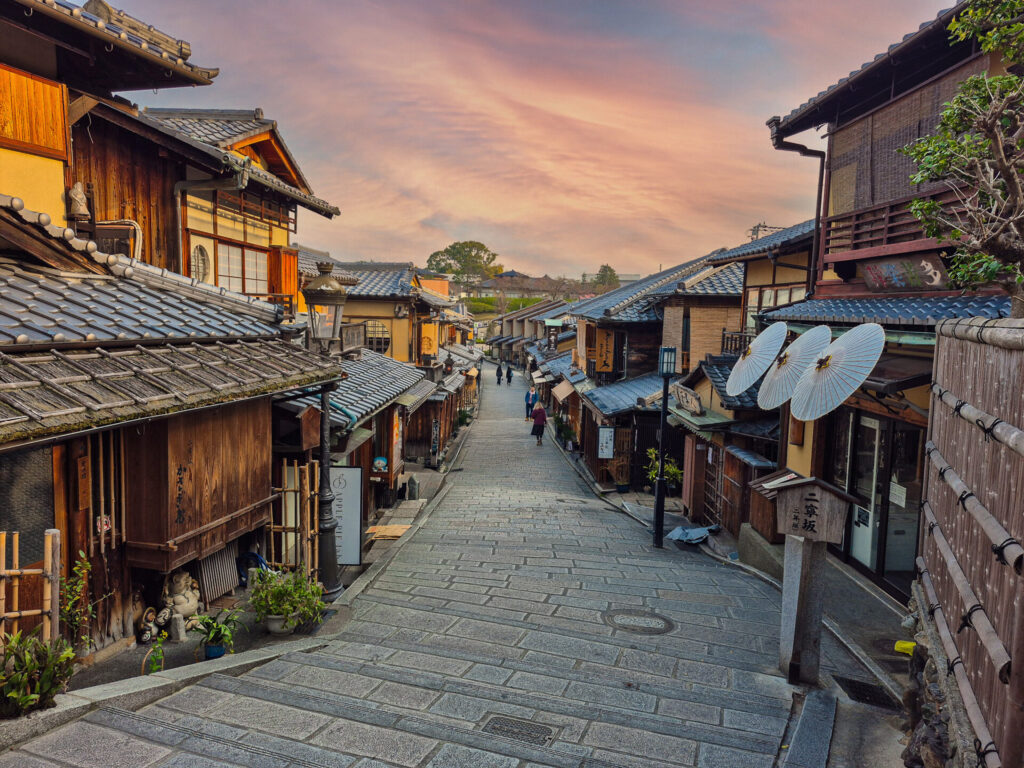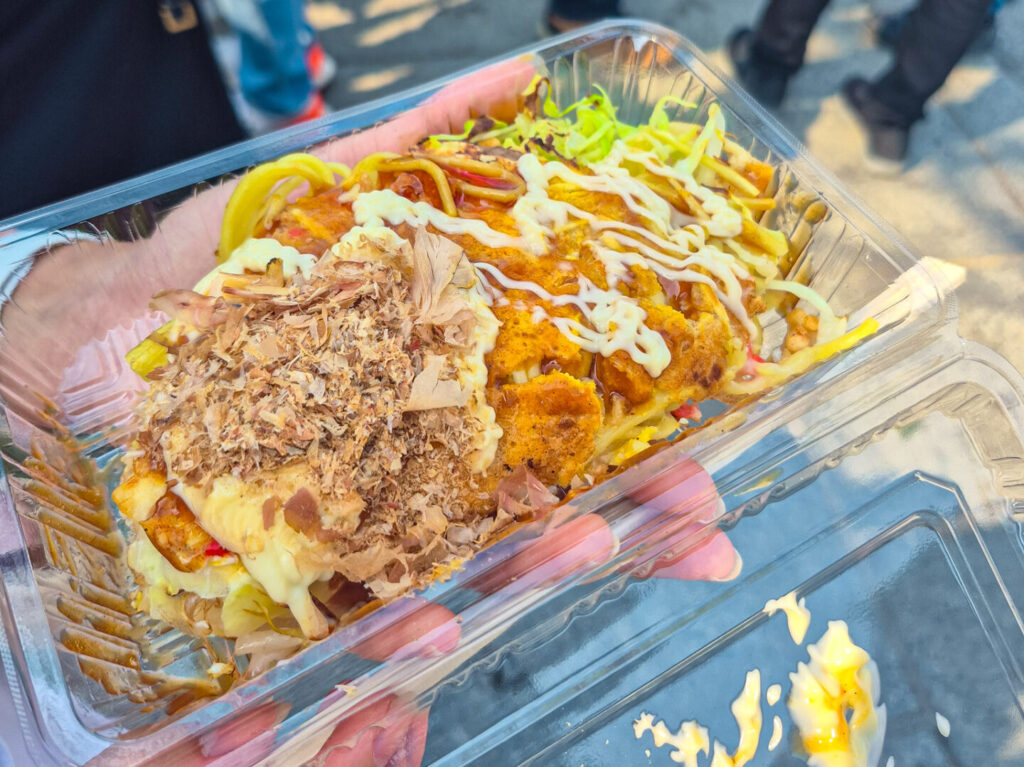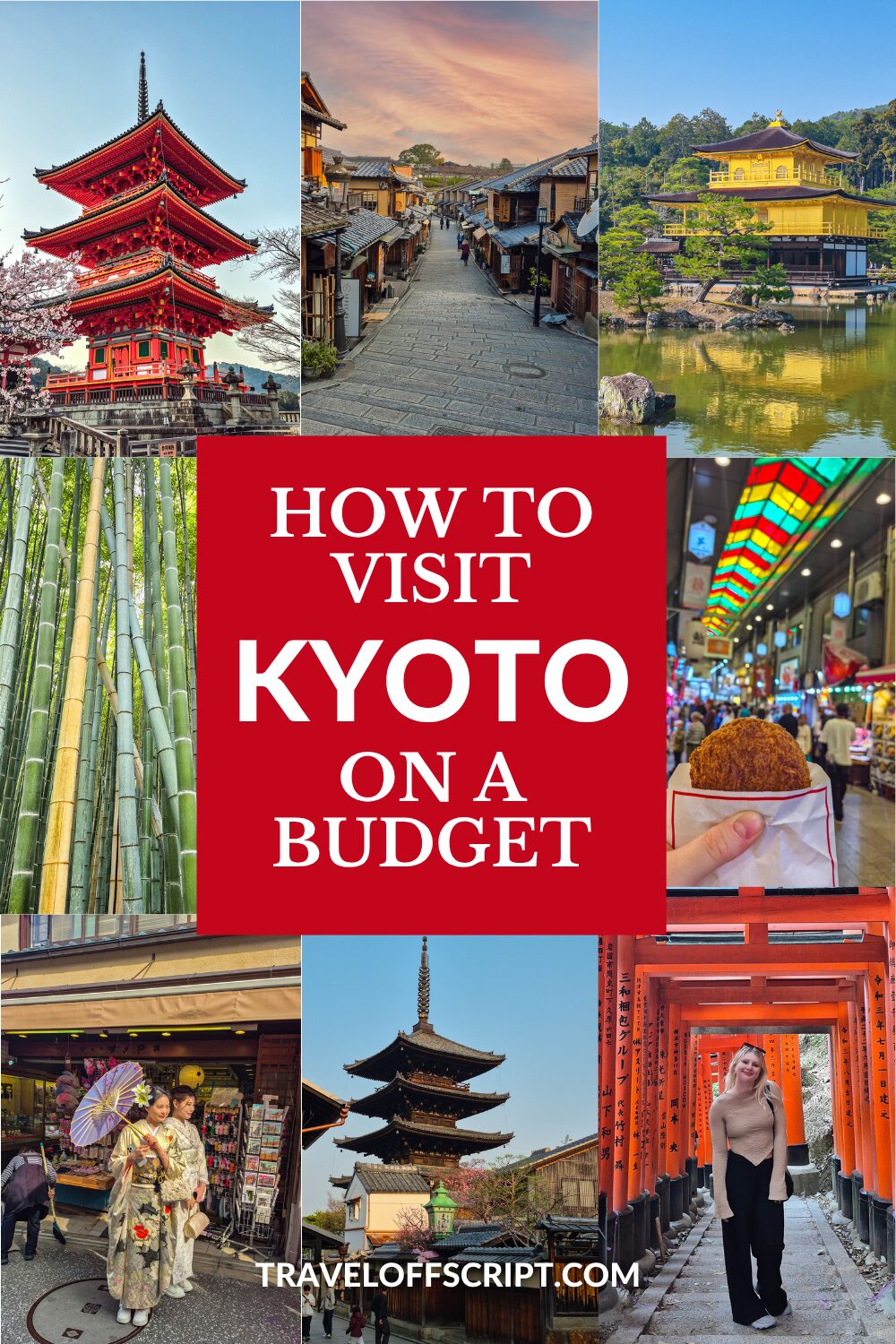How to Visit Kyoto on a Budget
- May 29, 2025
- No Comments
Kyoto is the cities of temples, history and culture. It is one of my favourite places I have visited in Japan and there is so much to see and do here. It is one of the more expensive places to visit in Japan, so here is exactly how you can do it on a budget!
I recently visited Kyoto as part of my 2-week Japan trip and quickly fell in love with the city. Not only does it have the most beautiful temples and shrines, it also has amazing food, gorgeous nature and so much history. I ended up spending 2 days here as I booked super last-minute and accommodation was pricy, but I would recommend spending 3 days if possible.
While in Kyoto, I learned a lot about how to keep the cost down and some hacks for my budget travellers. I will share all of my top tips and tricks in this article:
Table of Contents
ToggleHow to get to Kyoto on a budget?
Whether Kyoto is your first stop and you are flying in or headed to Kyoto from your previous stop in Japan, here is exactly how to get to the city centre:
By plane
There are actually no airports directly in Kyoto, the closest are in its neighbouring city Osaka – Kansai International Airport and Itami Airport. You can find cheap flights to them, even international, I recommend checking Kiwi.com – that’s where I found flights to Japan for around 300€.
Itami Airport is only for domestic flights so if you come from say Kyoto, Tokyo or other areas in Japan. I actually flew in from Northern Japan, Sapporo, as I had just finished working my ski season there, however, my flight still went to Kansai Airport.
From your airport in Osaka, you can then get to Kyoto via train, bus or private shuttle.
Train: The cheapest way to get from Osaka airport to Kyoto is to head into Osaka city centre from the airport (all the info about getting from Osaka airports to the city centre here – the cheapest way costs 970yen so $6.70) and then get the local train (The Hankyu Kyoto Line) for $3-4.
Alternatively, you can also get the Kansai Airport Express from $13.35 (fastest way).
Bus: Airport Limousine Bus for around $20
Private Shuttle: Book here – from $150
From Tokyo to Kyoto
If you are on a budget, the cheapest way is via night bus from e.g. Willer’s Express (check out my experience on a night bus here). Tickets start at 5000yen ($35) and you save a night of accommodation.
If you are on a time-crunch, you can also get a Shinkansen (the express train). It costs around $100 and takes only 2 hours. Check for tickets here.
Where to stay in Kyoto?
Kyoto is a little more expensive for accommodation compared to e.g. Osaka, but you can still find some great central accommodations at fair prices. Dorm rooms are around $20-40 while private rooms in hotels go from about $50-70 if booked early enough.
Best hostels in Kyoto for backpackers:
- Piece Hostel Kyoto – Lovely dorm rooms with big beds and curtains. Location is super central, right by Kyoto station.
- Woman Only Guesthouse Nanohana (Female only) -This one is for my fellow solo, female travellers. The location is unbeatable and even private rooms are really affordable.
- Ryokan Hostel Gion – Really nice dorms with lots of privacy in the dorm beds and located right in the heart of Gion so perfect for sightseeing.
- The Millennials Kyoto – Located right in downtown Kyoto, this hotel has high-end pods that allow for ultimate privacy and comfort.
Best affordable hotels in Kyoto:
$ HOTEL RINGS KYOTO – Super lovely and affordable hotel right in downtown Kyoto. Rooms are nice and very spacious for Japan!
$ Wanosato Kyoto Musee – Incredible prices for the location (Gion) and beautiful rooms. Breakfast is included.
$ Tabist GROOVE KYOTO OKOSHIYASU – Located close to Kyoto station, this hotel offers big rooms and great service.
How to get around Kyoto using public transport?
Kyoto’s public transportation network is extensive and pretty efficient. You can either buy single trip tickets at the ticket machines each time or use an IC card. An IC card is a prepaid card that you can use for transportation or even the convenience stores, lockers and many more things around Japan.
The version for Kansai (includes Kyoto) is called ICOCA but you can also use Tokyo’s Suica card or any other. Prices start at ¥1000 including a 500yen deposit that is refundable at the end of your holiday. The other 500yen are loaded onto the card. You can buy the ICOCA at JR stations or Kansai airport and top it up at any train/subway station and most convenience stores.
I used Google Maps to get around Kyoto and plan my transportation. A bus journey for example costs 230 yen. If you are planning to take a couple of bus or subway rides a day, get a day pass for 1,100 yen. There is a lot of public Wi-Fi in Japan, but I would recommend getting an E-Sim for easiest navigation.
My top tips on visiting Kyoto on a budget
Kyoto is a fairly pricy city as it is so popular with tourists. Nevertheless, it is possible to visit on a budget and I have done exactly that. The full budget-breakdown is at the bottom.
Visit during the off-season

Everything in Kyoto triples in price around cherry blossom season (Late March to Early April). Other peak seasons are fall (Mid-November to Early December) for the fall foliage and Golden Week (spring – research exact dates) which is Japan’s 1-week long National Holiday where everyone and their grandmother is out. Avoid Golden Week at all costs!!
The best way to save on accommodation and other costs is by visiting outside of those seasons. And don’t worry – though no cherry blossoms may be around, the city is still stunning and it will be a lot less busy and hectic. I would recommend early March & late May (not as freezing as winter) and September & October (not as humid anymore).
Choose affordable accommodation

Check the “Where to stay in Kyoto” section at the top for my hostel and hotel recommendations, but the main way to keep costs low when travelling Kyoto is by booking a budget hostel or hotel. If you are 2 or more, budget hotel rooms can often be cheaper than a hostel. Capsule hotels are also really nice in Japan and quite affordable. I would compare prices on the actual website of hotels as well as on Booking and Hostelworld.
Accommodation in Kyoto is expensive, so try and book this as early as possible and check the cancellation policies – ideally you want a flexible cancellation possible in case anything changes.
Plan transportation and get a day pass if you are going to move around a lot

Some of Kyoto’s best attractions are unfortunately at completely opposite sides of the city. You will hence likely be taking a few buses or trains per day, for example a 20-minute train to Arashiyama Bamboo Forest. If you plan your trip carefully, you can minimise the amount of trains and buses needed and hence the transportation cost.
Let’s use my “3 Days in Kyoto” guide as an example:
It would likely be worth getting a public transport day pass on the first day (1,100yen) as you are moving around a lot, the second day is solely in Gion so very walkable and the third day would only need 2-3 buses (690yen). That keeps your total transportation cost for the 3 days around $12 – super affordable!
Choose which temples you want to see carefully

There are countless temples in Kyoto and one more beautiful than the next. In the Gion area alone, you can easily visit 5-6 per day. Most temples charge a fee of around 500yen ($3.50). If on a budget, I would try and research a little more in detail which temples and shrines interest you. For example in Gion, I would definitely pay for Kiyomizu-dera, but leave out the other paid temples and instead visit the free ones like Yasaka Koshindo and Gion shrine.
Use convenience stores or street-food stalls for good, low-cost meals

Convenience stores in Japan are honestly next-level. You can get delicious and balanced meals here for less than 500yen ($3.50). For example, an Onigiri with tuna is usually around 180yen ($1.25). The famous egg sandwiches are usually around $2. I had most of my breakfast and lunch meals from convenience stores such as Lawson, 7-Eleven or Family Mart and saved a ton of money.
Street food stalls are also a great option for affordable food. You can usually get a big plate of like Dashimaki Tamago, Mitarashi Dango, Taiyaki or Okonomiyaki for 300-800 yen ($2-5.50).
Bring a refillable water bottle
Tap water is drinkable all across Japan as they follow very strict cleanliness procedures. From my experience, it also doesn’t have any of the weird aftertaste that sometimes comes with tap water. This will save you a couple 100 yen every day on not having to buy drinks.
Rough price breakdown per day in Kyoto for budget travellers
- Accommodation: between $20-40 if you are choosing dorm rooms
- Transport: Likely between 500-1,100yen per day ($3.50-$7.50)
- Meals: If you use the convenience stores for say breakfast and lunch, you’d likely spend no more than 1000-1500yen ($7-10) in total. You can then find some high-class, delicious dinner places for around 1000yen ($7) – that’s the great thing about Japan, amazing food is often affordable. A lot of the smaller, local places will even have some simple Udon or Curry for 500yen ($3.50).
- Attractions: A lot of the main attractions like Fushimi Inari Shrine or Arashiyama Bamboo Forest are actually free, but you will likely pay entry to 1-2 temples per day at around 500yen ($3.50) each.
How many days in Kyoto is enough?
I know that Japan trips are often on a fairly tight schedule, but I would highly recommend at least three days in Kyoto to see the main attractions. If you have more time, you can venture off the main attractions a little bit and discover a more authentic side of Kyoto.
Related articles: The Ultimate 3-Day Kyoto Itinerary for Solo Travellers
Is Nara closer to Osaka or Kyoto?
Osaka is a little closer to Nara than Kyoto and I decided to do my day trip from Osaka as accommodation there is a little cheaper than in Kyoto. However, you can easily visit Nara from both cities in under an hour.
Related article: The Ultimate 4-Day Osaka Itinerary
Hi, I'm Bell

My blog is here to show you that there isn’t one correct way to travel the world. Together, we can figure out what that means for you. Learn more about me here!
Grab my Ultimate FREE Packing Guide
Travel Off Script contains affiliate links to support the running of the blog. If you make a purchase through these links, I will earn a commission at no extra cost to you. Thank you.



